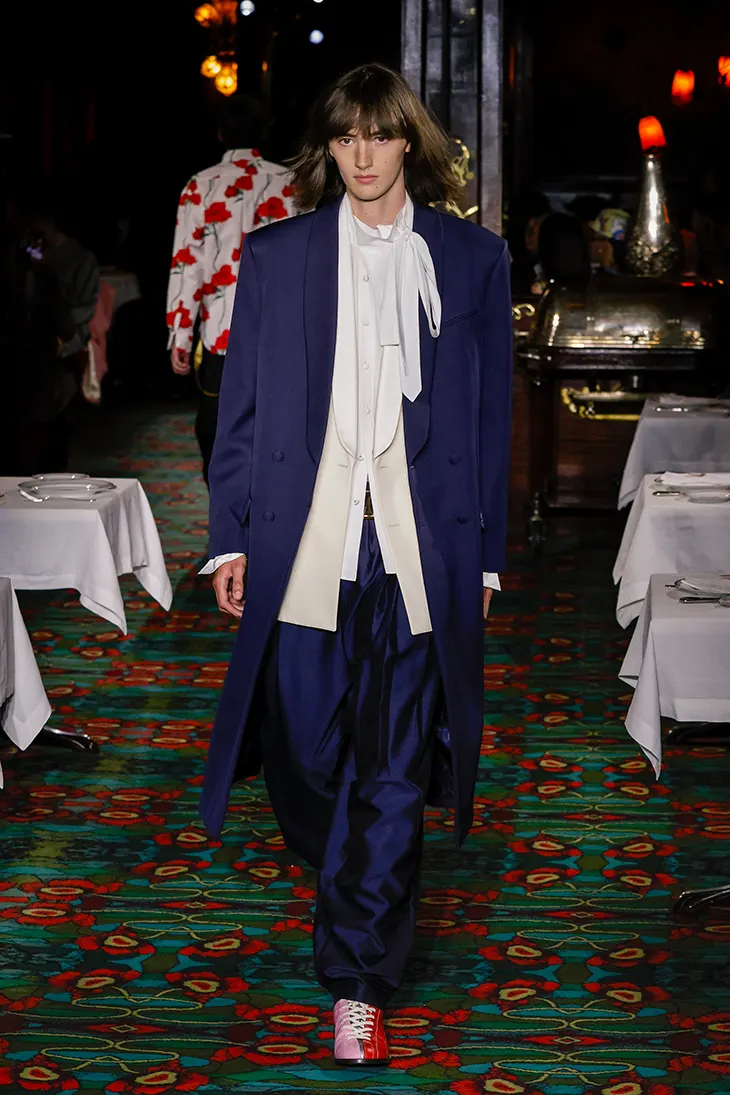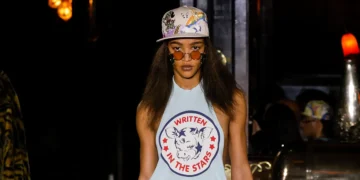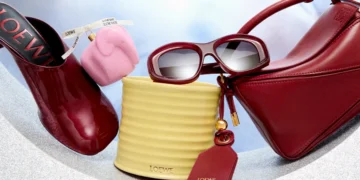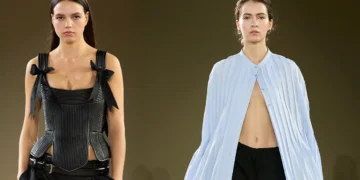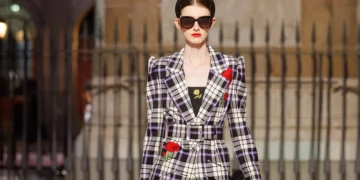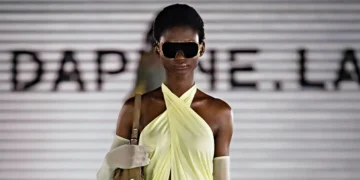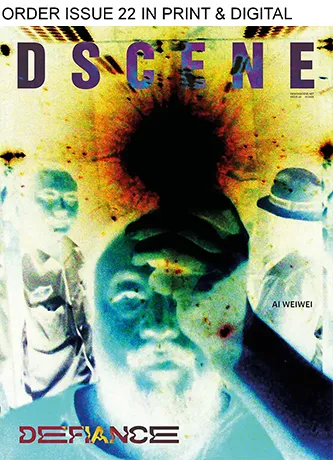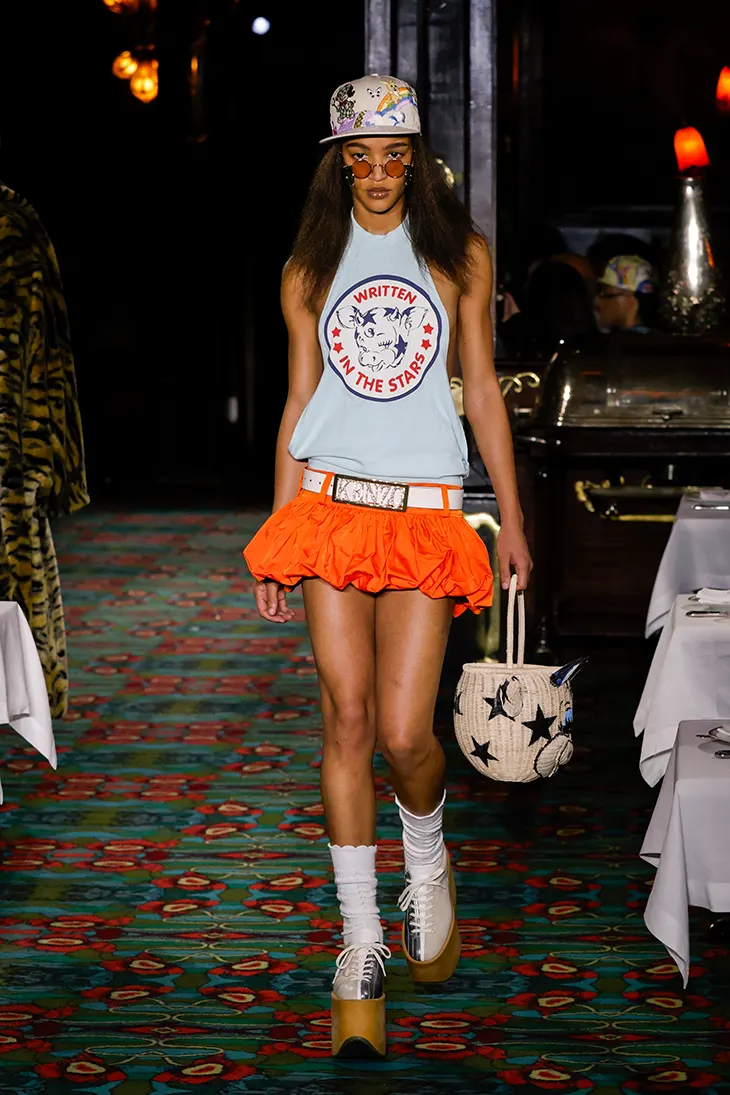
Kenzo returns to Paris for SS26 under the direction of NIGO, who brings together decades of influence through a concept titled Club Kenzo. This season pulls from multiple reference points, Andy Warhol’s Factory, Kenzo Takada’s Parisian studio, and NIGO’s own creative orbit, to build a collection that looks outward while keeping things personal. At Club Kenzo, rules don’t apply, genres don’t stick, and getting dressed becomes a form of invitation.
The club space becomes a metaphor for experimentation. The Kenzo Guy and Kenzo Girl dress with intent but leave formality behind. They borrow from one another, blur categories, and let chance encounters shape their style. NIGO treats dressing up like a game: thoughtful, fast, and never too fixed. Bowling alley dates inspire graphic motifs, while cartoon characters return from last season’s narrative of tiger and bunny love. This time, their children Mimi, Jojo, and Zaza make an entrance in tiger-striped fur.
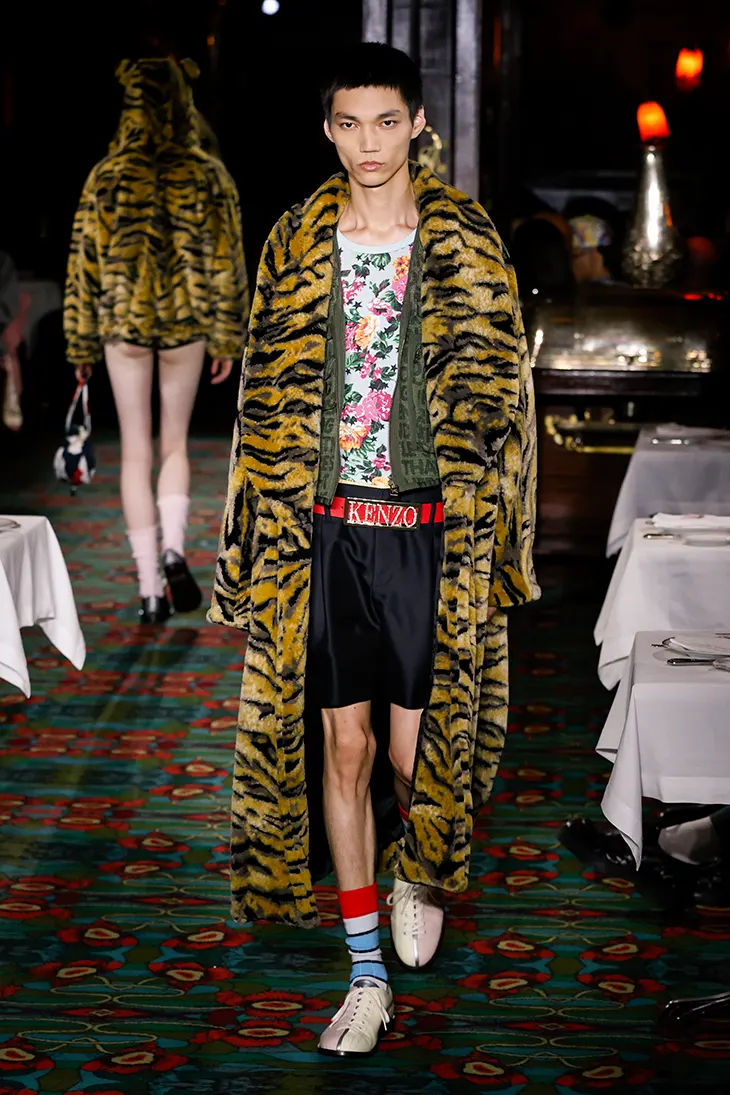
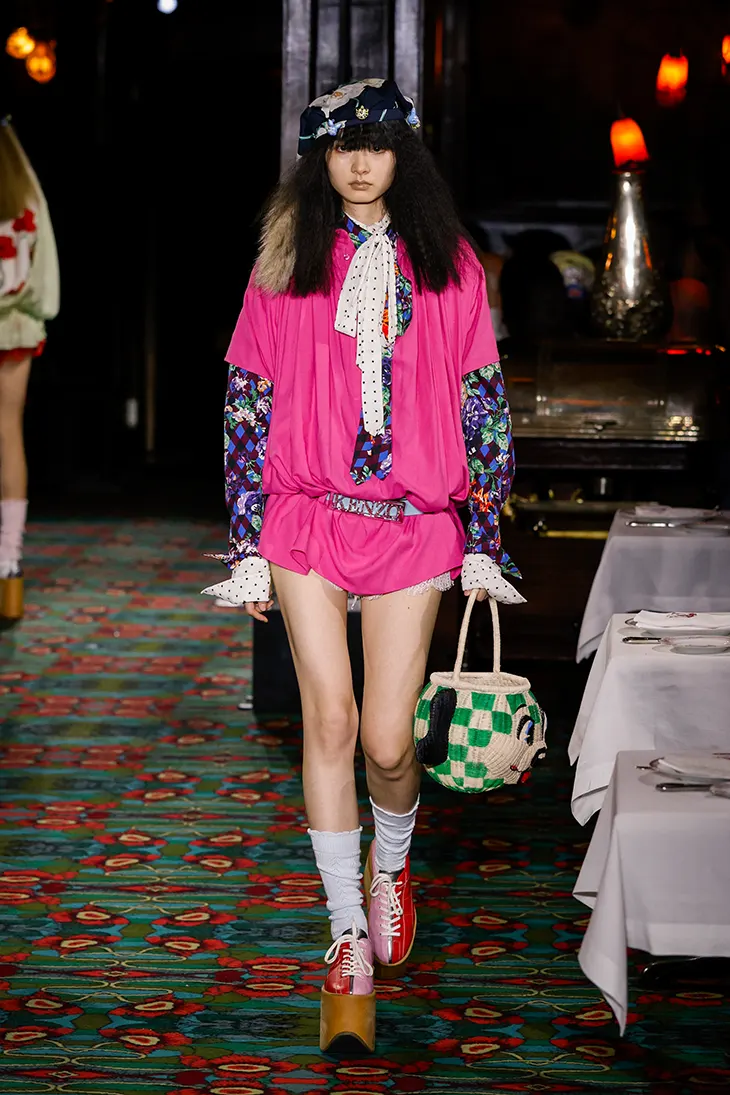
NIGO sets the tone with a soundtrack by Hiroshi Fujiwara and places the show inside Maxim’s, a venue already known for hosting Paris nightlife across eras. Within this setting, the designer revisits subcultures through a lens sharpened by tailoring and exaggeration. Florals, checkerboards, and collegiate graphics stack on top of one another. Some garments receive airbrush treatments, others arrive with visible marker edits done by the models themselves. Texture and print speak all at once.
Tailoring arrives with contrast. Italian structure meets punk energy through hot pink dinner jackets and monogram linings, while Japanese tailoring takes on new meaning in satin eveningwear. Workwear nods to military form but shifts into new territory through pearl buttons, faux fur, and color. A rose-patterned chef’s shirt with round trousers grounds the silhouette in Kenzo Takada’s history but avoids nostalgia.
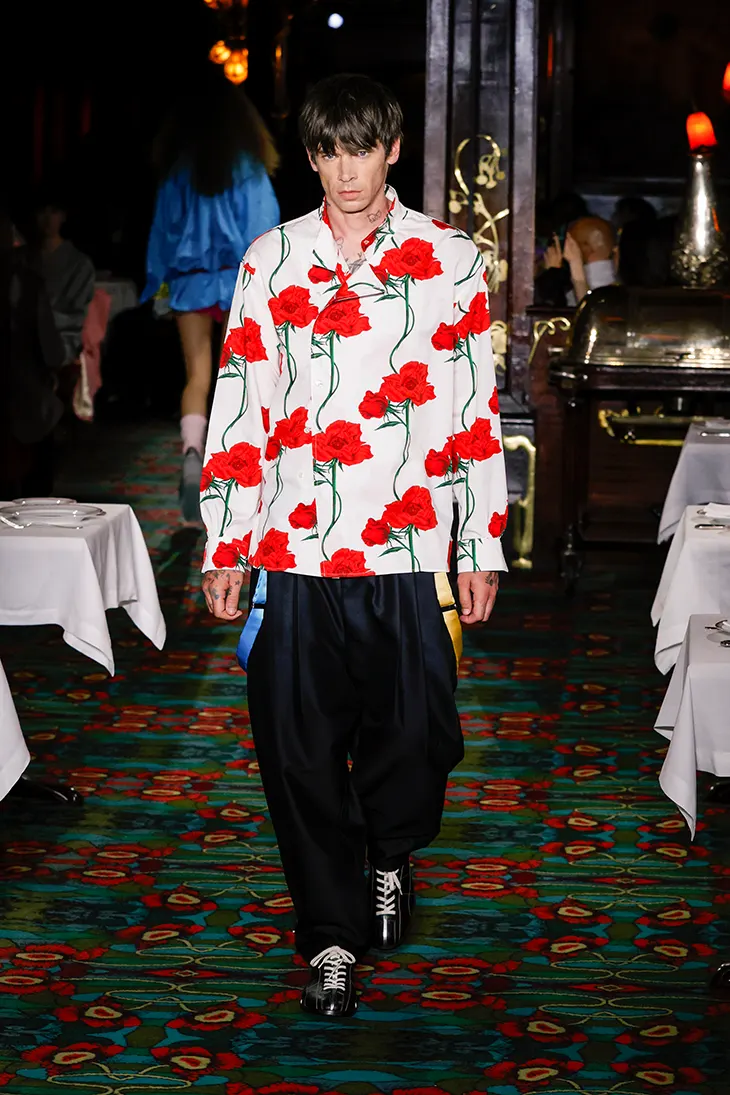
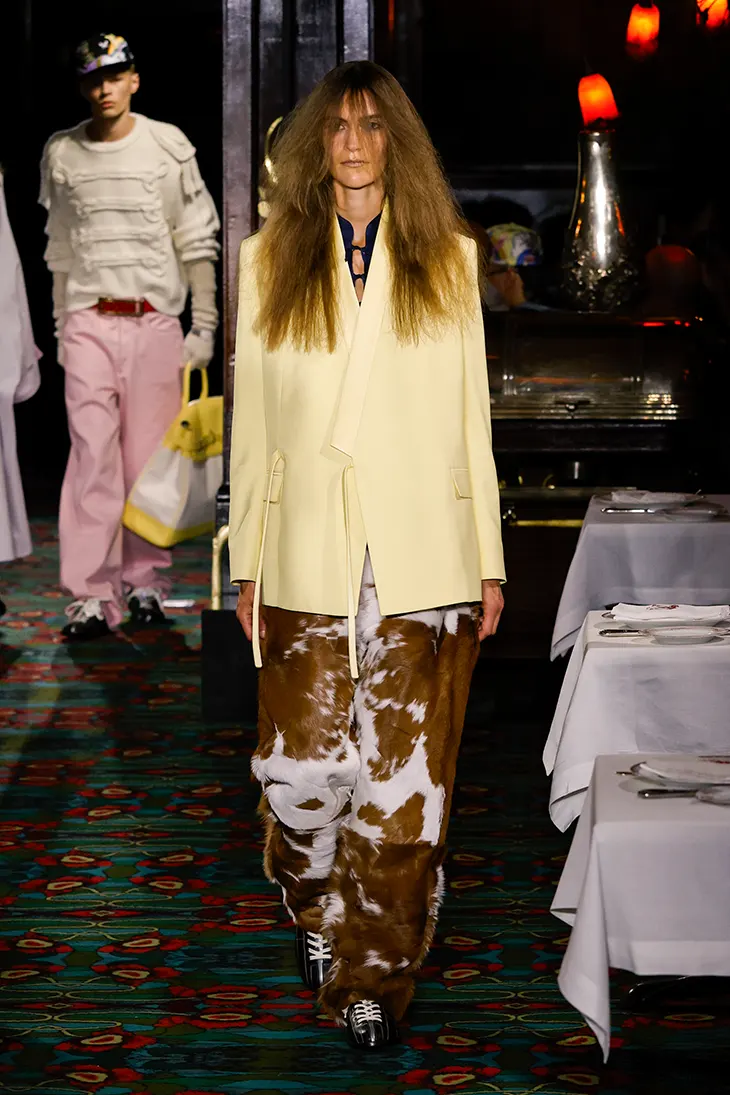
The pattern work builds a visual code. NIGO lifts rose prints from the archive, repositions them with stars, harlequin checks, and psychedelic florals pulled from early 1990s collections. Graphics double down on contradiction: ivy league symbols mixed with punk attitude, collaged prints rendered through DIY processes.
Footwear pushes familiar objects into surreal form. The Kenzo mule returns, reshaped into a men’s silhouette. The bowling shoe turns into a platform, one version even hides a snow globe inside the heel. Accessories carry humor and self-reference. Belts feature playful phrases, bags arrive in lived-in leather or stiff canvas, finished with paint, patches, or scratches.
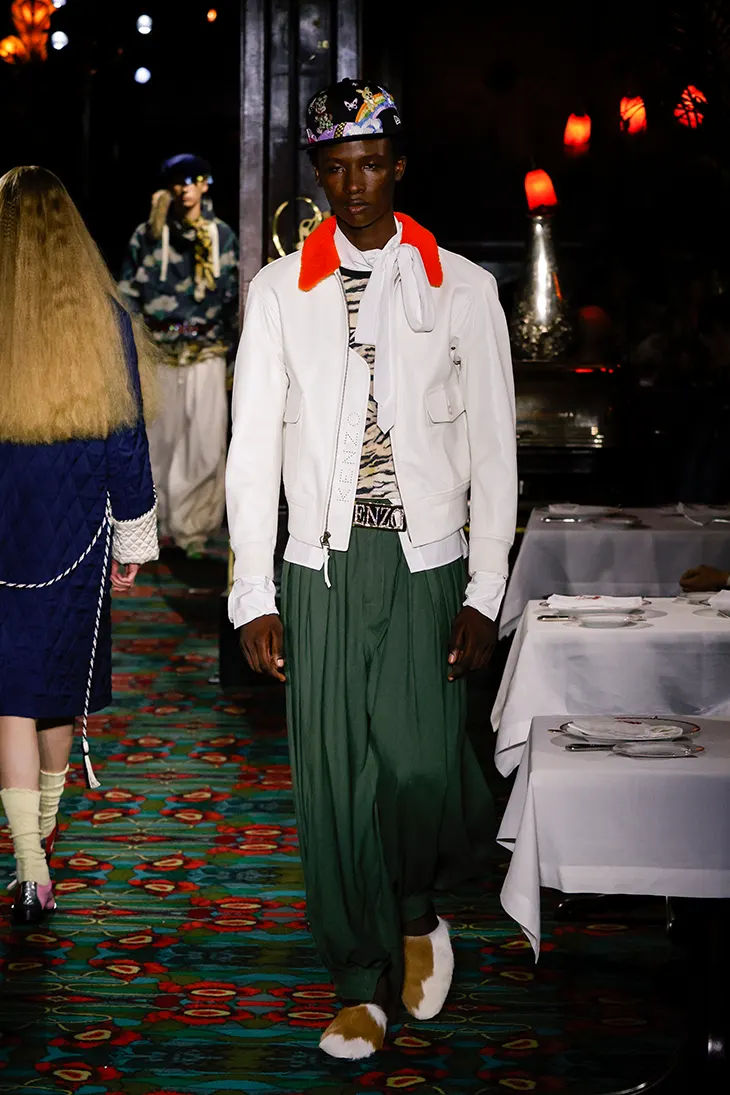
The collaboration with New Era also reappears. This season, the 59FIFTY fitted cap returns with a new capsule. The fit stays clean, but the context shifts with each look. NIGO doesn’t treat these pieces as merchandise they function as part of the character building.
